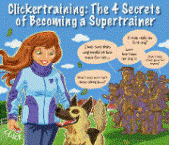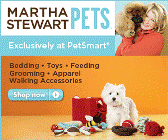Good Dog Training Advice
Get Fast & Simple Dog Training Tips to
Turn a Difficult Dog Into an Obedient Pet!
How to Deal with Aggression and Biting
In today's newsletter we're going to look at how to deal with aggression and biting. Aggression in a dog is frightening. The first time your once cute and cuddly puppy decides to snap or lunge at someone in your home, you likely break out in a cold sweat and start worrying about how much further it could go. But, dealing with those aggressive tendencies doesn't always have to be the stressful, nearly untenable
situation you fear. Getting Past the Fear A dog that likes to snap at people is scary, and you're forgiven for being afraid the first time. But, don't forget that this is your dog. If you show fear to it, you're only going to further those bad behaviours and make it worse. So, step one in overcoming these bad habits is to take control of your household and banish fear. You don't just
need to tell your dog in charge, you need to believe it and show it. Much of what a dog communicates is through
body language and if yours says "I'm afraid" they'll Once you've gotten past this point, things can get a lot easier. But, the actual actions you'll take depend largely on what specific dog aggression problems you're having. The Aggression and Its Roots Aggression comes in many forms. A dog doesn't just wake up one day and decide it wants to attack anything that moves (unless there's something physically or mentally wrong with it). So, you need to pinpoint where are all growling and snapping is coming from. * Dog to Dog Aggression - A dog aggressive towards other dogs in your home likely does not know their role in the house. They are trying to protect you and their perceived space. Take control as the alpha leader and show them that neither dog has the right to be aggressive. * Leash Aggression - Leash aggression comes from being restrained from a target. Teach a
dog to overcome this by forcing them to sit while on a leash within viewing distance of their source of aggression.
Treats and clickers can help here. If your dog shows food bowl aggression, consider changing meal times, shifting locations, and providing reassurance. If that doesn't work, contact a vet to rule out any health issues that can lead to heightened aggression. * Random Aggression - A dog that grows aggressive with minimal notice and without any provocation is extremely dangerous. It could be a result of sickness or mental instability, so you'll want to see your vet immediately. Each of these is a completely different situation that requires a different approach. And, you need to remember. If your dog's aggression leads to biting that you cannot control and doesn't fall into any category, you need to seek out an expert. A dog is a very dangerous animal if it cannot be controlled, and local law enforcement will treat it as such. Do what you can, but be responsible and if you're one of the 99% of people whose dogs just need a little discipline and a clear role in the house, you should be A-Okay.
| |
|


Discover the Secrets to Training Your Dog Or Puppy. Huge BONUSES for a limited time only!
Click here now...
|
http://GoodDogTrainingAdvice.com






